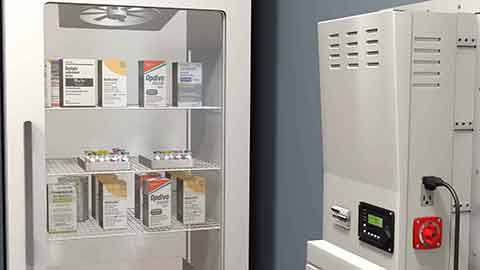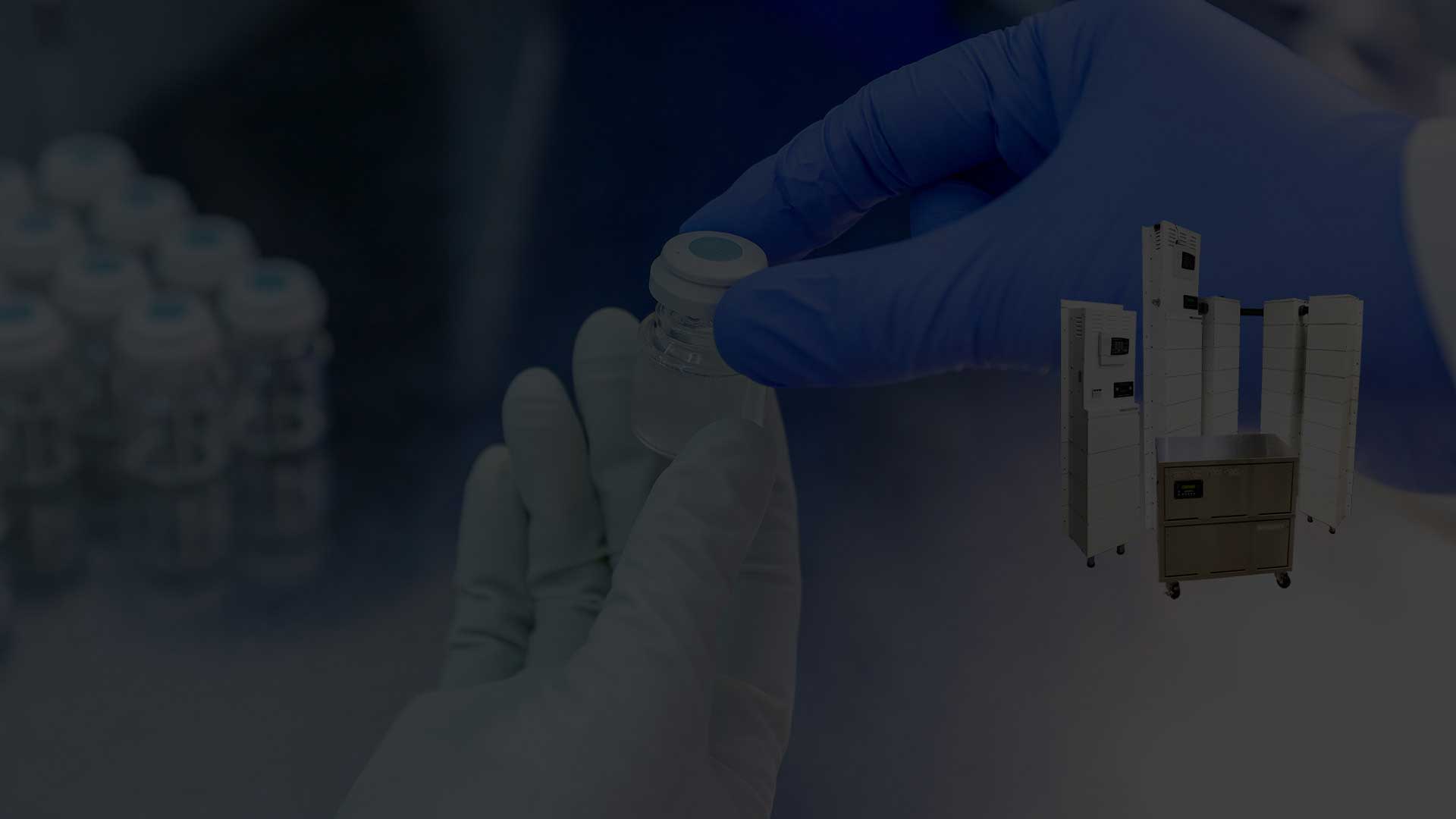Vaccine Storage |
March 13, 2024
| Medi-Products
What Are the Recommendations For VFC Data Loggers?
Effective vaccine storage depends on keeping them in optimal temperature ranges. The Center for Disease Control recommends keeping vaccines in temperature ranges of 2°C to 8°C. However, keeping the vaccines in this range requires monitoring vaccine temperatures regularly.
Temperatures are typically measured using temperature monitoring devices (TMD), also known as a “digital data logger” (DDL). The CDC recommends (and VFC requires) VCF Providers to use a continuous temperature monitoring device for vaccine storage refrigerators.
What Is a Data Logger?
A data logger is an electronic device that automatically monitors and records changes in environmental parameters over a given period. The logger typically contains a sensor which receives information (in this case refrigerator or freezer temperature) and a computer chip which stores the data. The DDL provides accurate temperature information for your freezer and refrigerator, and allows the data to be transferred to a computer for analysis.
A data logger can be a standalone unit or made up of multiple channels. However, most standalone units are battery-powered, making it possible to record even while in transit and do so for extended periods.
Most DDLs use a buffered temperature probe, which is the most accurate way of measuring the actual temperatures of vaccines in your storage units. These temps typically match vaccine temperatures more closely than those measured by standard thermometers, which usually reflect only air temperature.
You can retrieve temperature data from your DDL either by downloading it to a computer using special software or from a website. The software or website may also allow you to set the frequency at which the logger should take readings.
These readings provide you with critical data that you can use to review your vaccines’ viability. Thus, you need to decide which of the options will best suit your facility – an independent software or a website program.
How To Set Up VFC Data Loggers
When using a data logger for vaccine storage, the Center for Disease Control recommends you must put a logger in every freezer and refrigerator storing vaccines. specific type called a digital data logger (DDL). The display monitor needs to be visible from the outside of the vaccine refrigerator/freezer storage unit.
The information it provides includes:
- Whether a storage unit has been operating or had operated outside the recommended temperature range (a temperature excursion) and for how long
- Detailed information regarding all temperatures recorded at pre-set intervals
Staff will need to be able to record these Min/Max temperatures twice a day.
What Type of Data Logger Should You Use for Vaccine Storage?
Use digital data loggers that have the following features:
- The monitor needs to have a display that indicates the current temperature as well as Min/Max temperatures
- The display monitor needs to be visible from the outside of the vaccine refrigerator/freezer storage unit
- The data logger must also be able to produce downloadable data of temperature records in 15-minute intervals
- The accuracy of the data logger must be within +/- 1-degree Fahrenheit
- A buffered temperature probe
- An out-of-range temperature alarm
- A low-battery signal
- The device memory must be able to store no less than 4000 recordings
What Is Calibration Testing?
Calibration testing is required on VFC (Vaccines for Children) data loggers to ensure its accuracy against nationally accepted standards. The device is required to be calibrated at least 2-3 months prior to the DDL's expiration date, and carry a current NIST or ISO calibration certificate. The certificate of calibration testing should have the following information:
- Model or device name or number
- Serial number
- Date of calibration (report or issue date),
- Confirmation that the DDL passed testing or is in tolerance
What Are the Different Types of Data Loggers?
Data loggers come in three different types, namely USB data loggers, Bluetooth-enabled data loggers, and web-based data loggers.
USB data loggers are compact, reusable, and portable. They offer low cost, easy setup and deployment, and internal-sensor and external-sensor models. They communicate with a computer via a USB interface, but you can also use a data shuttle device to offload the data from the logger for transport back to a computer.
Bluetooth-enabled data loggers are compact, reusable, portable, and easy to set up and deploy. They can transmit data wirelessly to mobile devices or laptops within a 100-foot range and are helpful for monitoring in limited-access areas. In addition, you can download the data, view it in graphs, and store it in the cloud.
With web-based data logging systems, you get remote, round-the-clock, internet-based access to data via cellular, Wi-Fir, or Ethernet communications to your system. You can configure them with different plug-in sensors or wireless sensors or transmit collected data to a secure web server for easy access or retrieval. Additionally, you can reconfigure the system settings remotely and get an automatic text or email notifications when temperature excursions happen.
How To Use A Data Logger
A DDL should be used for each vaccine storage unit in your facility and each transport unit (emergency or non-emergency). Additionally, at least one backup DDL should be on hand in case a primary device breaks or malfunctions.
Keep DDL data for three years so that you can analyze them for long-term trends and or recurring problems with your storage units. If your facility receives public vaccine, you may need to keep the records longer as state regulations require.
DDLs can experience a "drift" over time, affecting their accuracy. Therefore, it would be best to do calibration testing every two to three years, according to the manufacturer's suggested timeline. In addition, the calibration testing ensures the DDL's accuracy conforms to nationally accepted standards.
Be careful when handling your data loggers, as if it is dropped, hit against the side of a storage unit, or potentially damaged in any way, their accuracy can be compromised. Thus, you need to check it against another calibrated data logger. If you are still unsure about its accuracy, replace the data logger or send it for calibration testing.
Since data loggers are typically battery-operated, it is crucial that you have a supply of extra batteries on hand. Note that battery changes may affect temperature accuracy and may need you to check the logger against a known calibrated data logger.
Additionally Protect Your Vaccines With a Refrigerator Battery Backup System
Vaccine refrigerators and freezers can be simply plugged into a vaccine refrigerator battery backup system, that will instantly switch over to battery power during a power outage. Request a Virtual Power Assessment to have your vaccine storage units protected for up to 72 hours!


